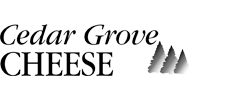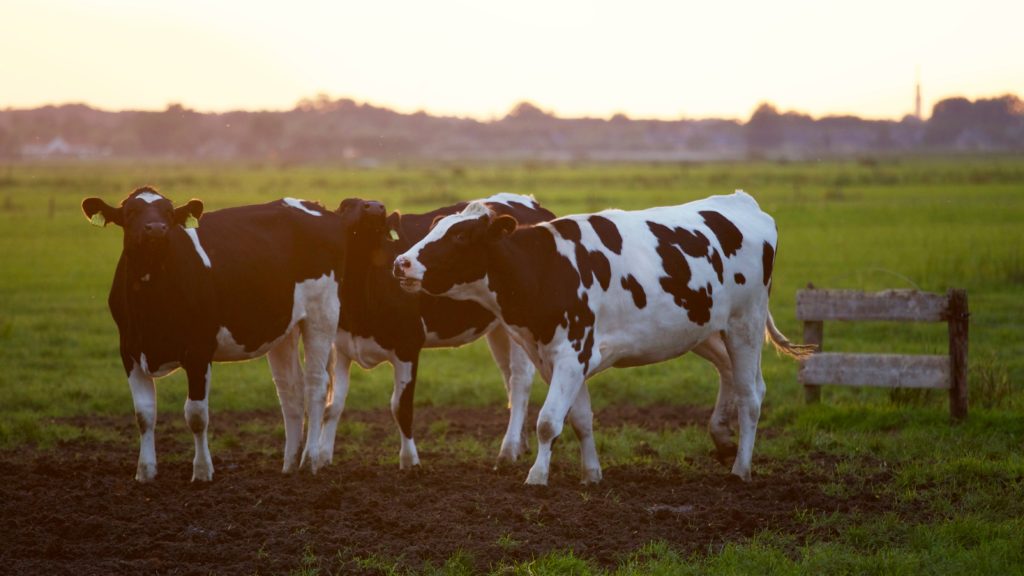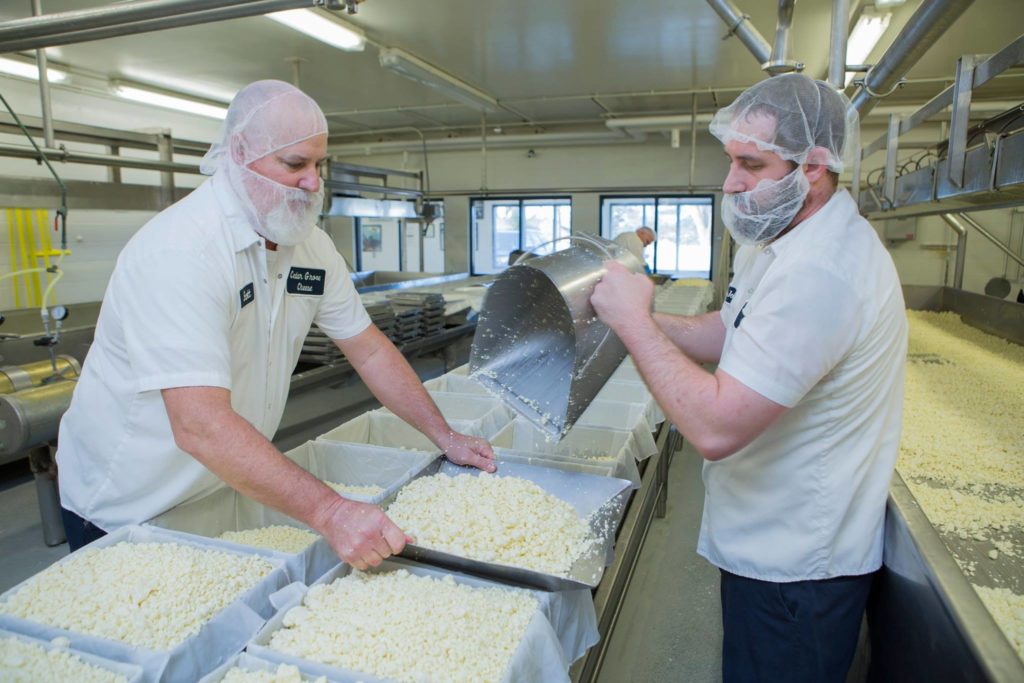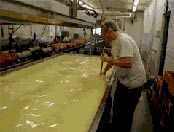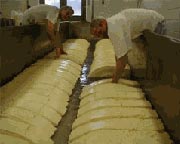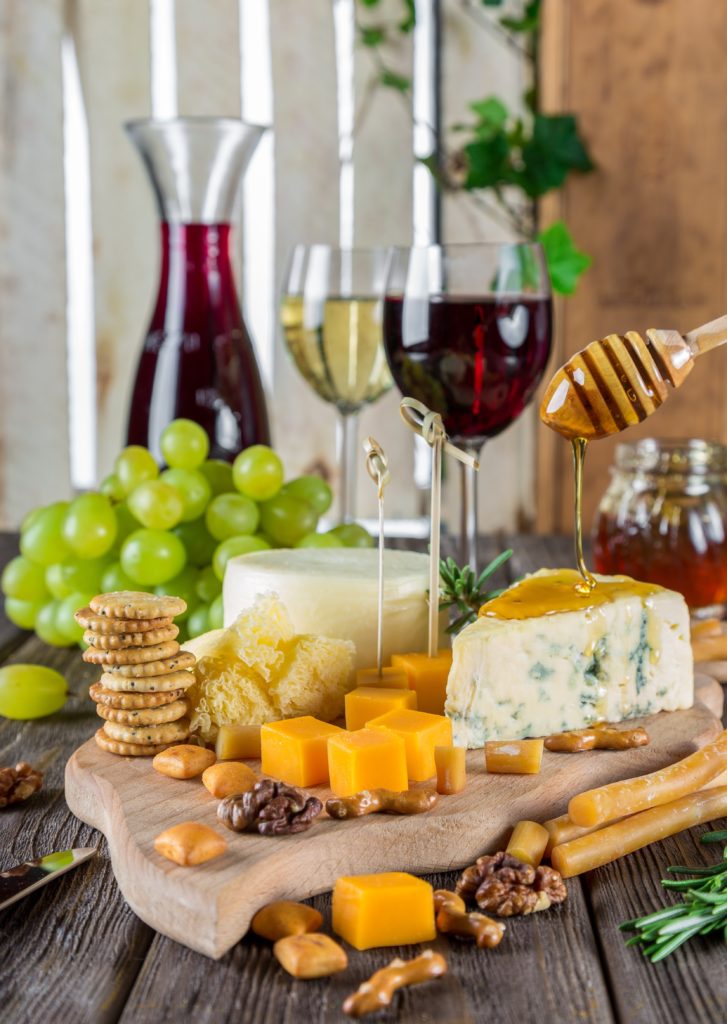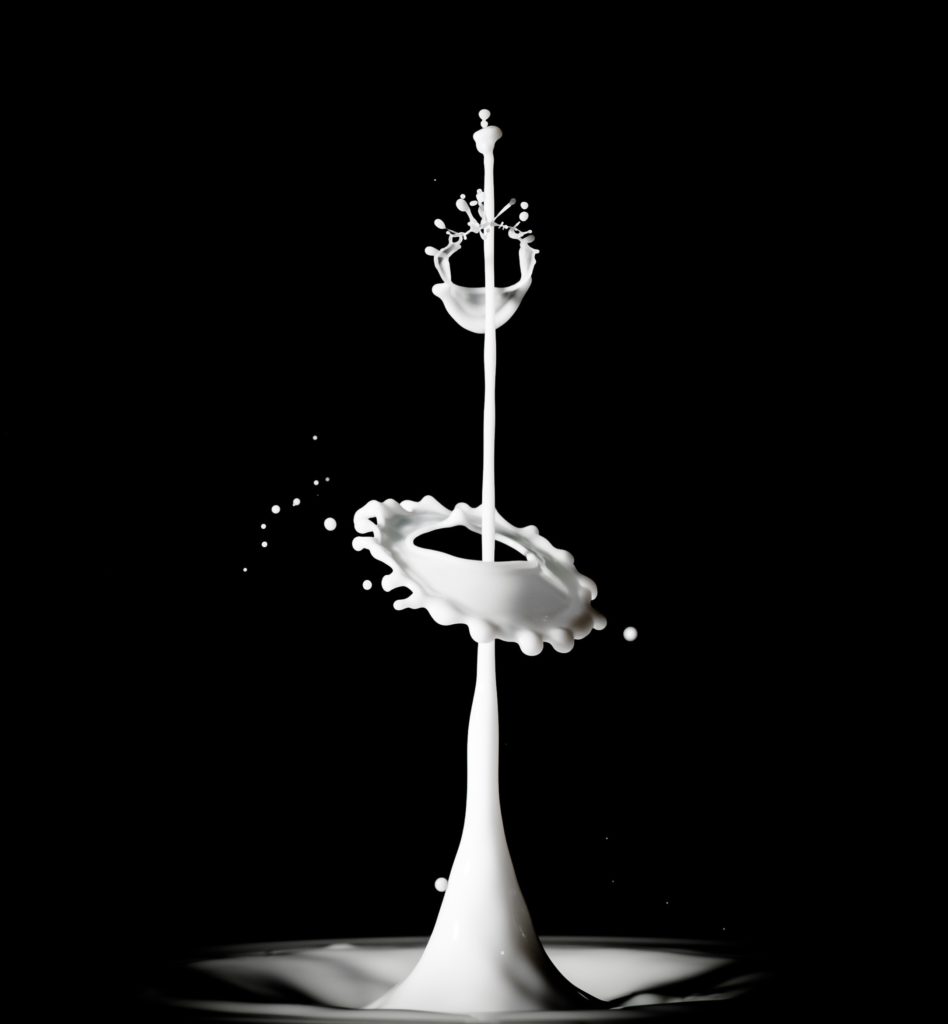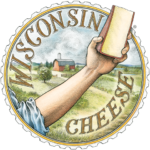The curds are scooped up with buckets and placed in metal forms called “hoops”. The hoops consist of three parts with a cloth liner. The center part of the hoop is supported by pins; when they are removed, the hoop collapses around the curds. When filled, the hoops are turned sideways and pressure is applied, compressing the curds into 42 pound blocks, or 10 to 40 pound wheels known colorfully as daisies, midgets or flats. After pressing, the identity of the individual curds are gone, and the block has the familiar look of cheese. In a vacuum chamber, the blocks are sealed into plastic bags. This makes it possible to keep the cheese for years without mold forming. The block is put into cardboard boxes with wooden liners to protect the cheese and keep it square. Then it is taken to the storage room and left to cure at about 40 degrees. Rather than vacuum packaging, some of the cheese may be allowed to develop a natural rind or be wrapped in cloth and waxed.
